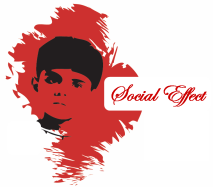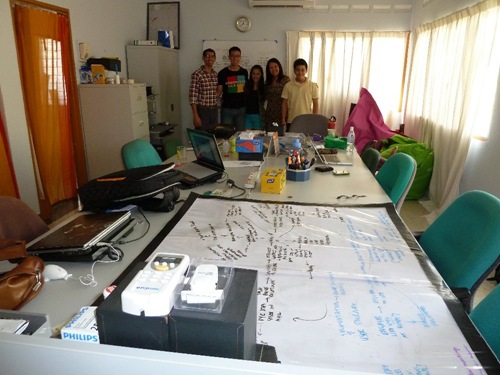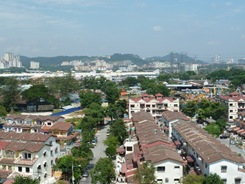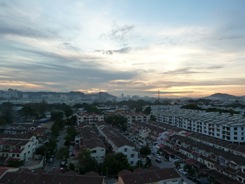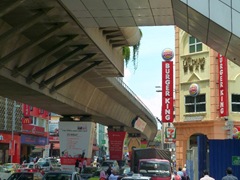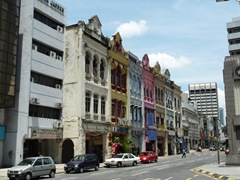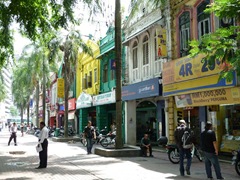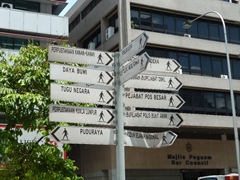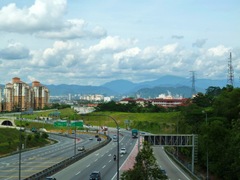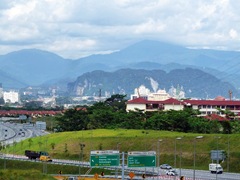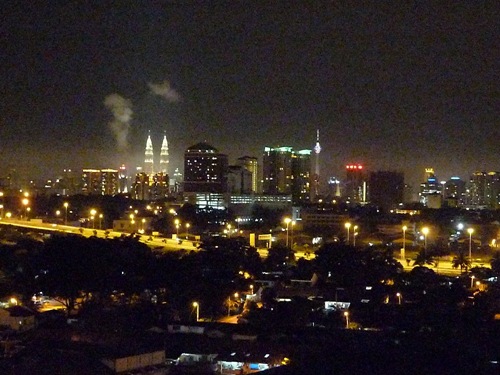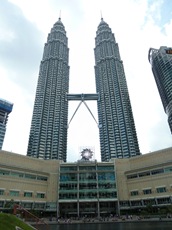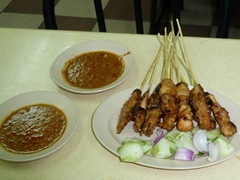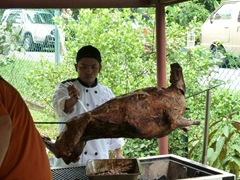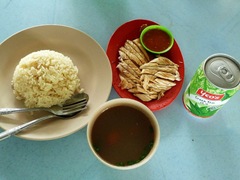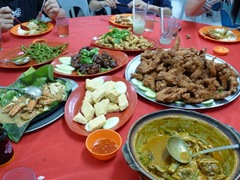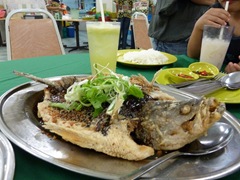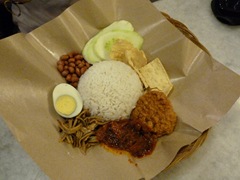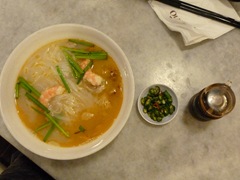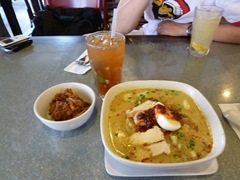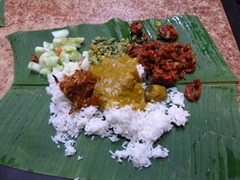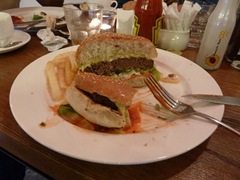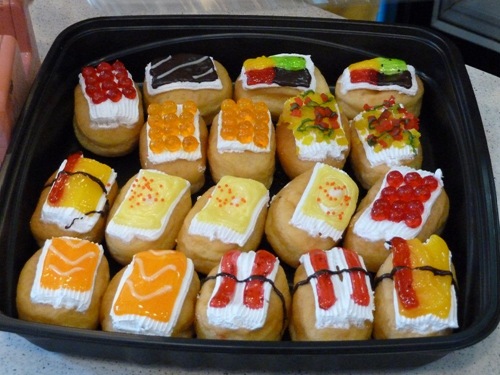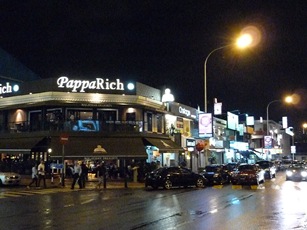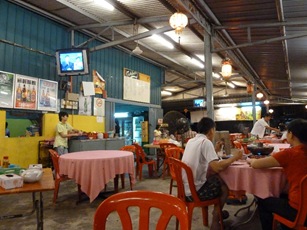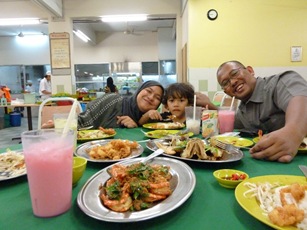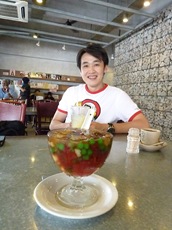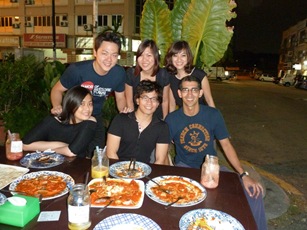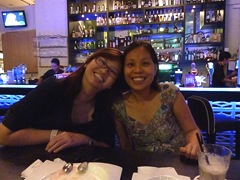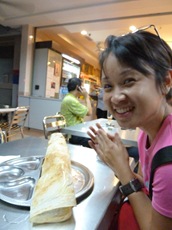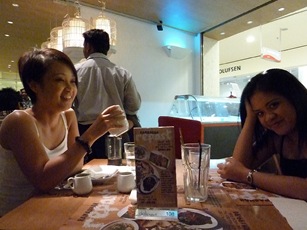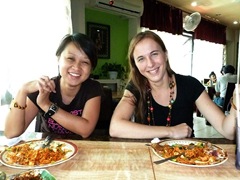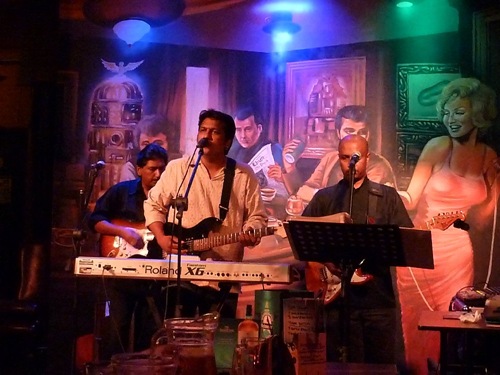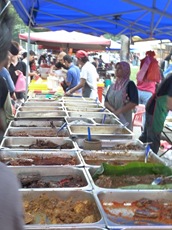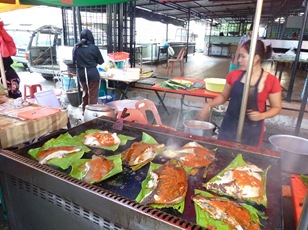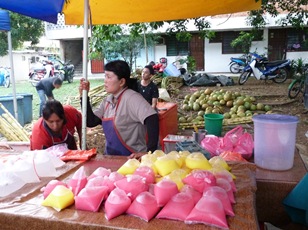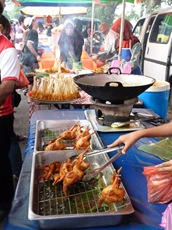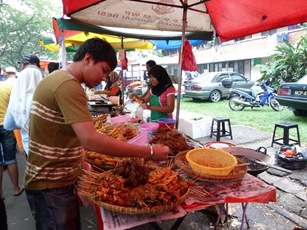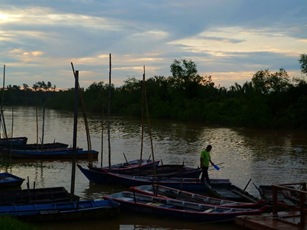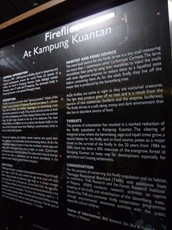Friday 14 January 2011
Dream Again
Since I spend much of my life helping people turn their dreams and visions into reality, she asked me to give a talk on dreaming at the school assembly. It was a little tricky because I’ve personally never been driven by dreams. I have no idea what the future will hold, or who I want to be, or where, in 10 years, 5 years, even two years. I have no vision of the future me. I do what I can, right now, in the loose direction of continuing to be able to help others; and that’s always worked well for me. Nevertheless I can see the importance of dreaming and as usual tried to make it practical :)
Not working? Click here to view Dream Again on Slideshare
Feel free to reuse, edit, share or translate if it’ll help. You can download the editable file from Slideshare.
Thursday 13 January 2011
Globosocial Projects in Malaysia
After easing back into social development towards the end of my Philippines journey, Malaysia was really about getting back into the swing of things. Hard to believe I know, when you look at the pictures in my previous post, but the bulk of my time was spent switching between a number of projects.
Interestingly the majority were related to political change. Malaysia has around 120 different ethnicities across its 13 states and 3 federal territories. It has 9 Sultans, in between whom the Kingship rotates every five years.
After independence from the British in 1957, the Malaysian Government instituted a range of affirmative action policies to ensure economic development of ethnic Malays. This was due to run for 20 years, over which policies meant to ensure level playing fields evolved into cronyism and mechanisms to further the interests of the dominant ethnic group. At the end of the 20 years, UMNO not only reinstated the legislation but moved it further in the direction of benefitting ethnics Malays. To qualify as Malay you have be both of the ethnic group and Muslim.
The outcome is a two tier economy, with Indians, Chinese and other ethnicities who make up a significant proportion of the population being discriminated against in everything from business to education and opportunity. If you’re interested to know more, I’d recommend reading “I Too Am Malay” by Zaid Ibrahim.
As a result there are lots of organisations and people involved in pushing for change and equality of all Malaysians. The various entities and individuals have to be careful because of the risk presented by Malaysia’s Special Branch i.e. Secret Service who help ensure the status quo continues.
All the various entities involved are essentially working towards the same goal, but that doesn’t mean it’s easy for everyone to see how they fit together. Working behind the scenes with a number of them, however, meant it became possible for me to help create a unified development model and facilitate working together.
- Untuk Perubahan Malaysia – Political Change & Social Inclusion
I met Jonson Chong through a mutual connection and started helping with his fledgling programme to ensure large scale political change with a focus on social inclusion. Simply advocating for change without viable alternatives is often a poor idea and a key reason why many movements simply result in the same problems recurring after what appears to be a significant surface shift.
One way to ensure sustainable improvement in politics is to increase citizen involvement and improve the quality of the next generation of politicians. Simply changing party, or rewriting rules and policy doesn’t necessarily solve the problem. We therefore focused on designing a movement to result in better politicians over a practical timeframe of three elections away.
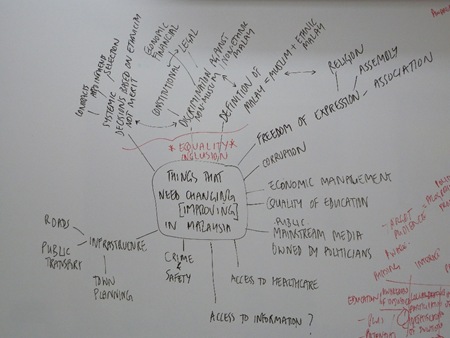
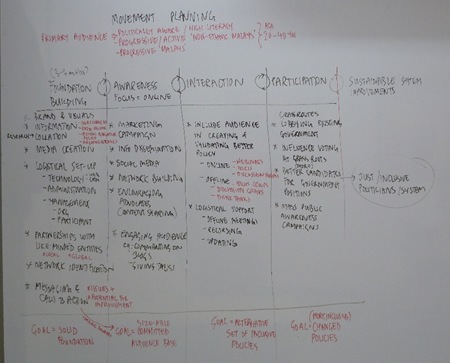
- EPIC – Voter Registration
This is an organisation that stems from a basis of developing leadership in young people, and has two focus points. One driving voter registration and the other driving young people’s involvement in helping society. We looked at strategy, organisational development and long term planning, focusing on how EPIC’s hugely successful Voice Your Choice campaign could help underpin movements addressing political change and social equality. Organisations involved in this sector are all separately trying to build their own advocates and supporter bases, but EPIC’s large scale engagement with the public and the resulting Citizen Database of newly registered and politically motivated individuals could provide the bedrock for the entire sector.
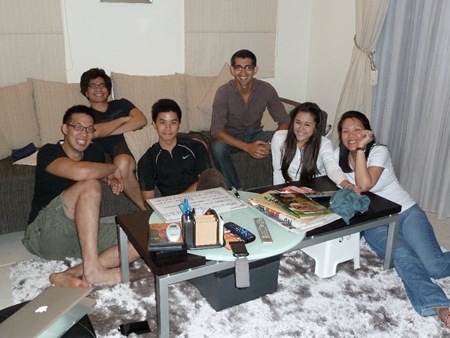

- Loyar Burok – Voter Education
Another organisation involved in political change, but from a legal perspective and focused on Voter Education. Loyar Burok brings together a range of different legal and human rights activists. After a couple of sessions we with founder Edmund Bon, we got all the various linked groups together to share and take-up the holistic unifying model of change put together with Jonson and the EPIC team.
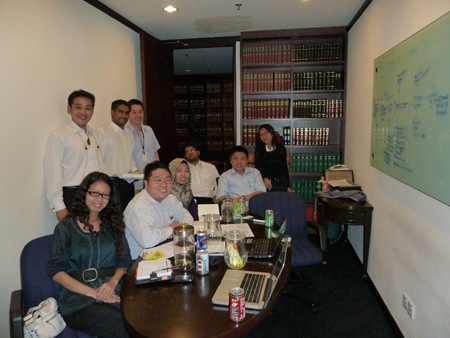
- Saya Anak Bangsa Malaysia – Creative Activism
Another organisation involved in political change, but from the angle of Creative Activism. Driving use and take-up of media and creativity to impact social consciousness and mobilise people to challenge the status quo. This was a follow on from work done with Loyar Burok and we had a fairly intense session on Programme Design, Strategic Planning and the mechanism of Change.
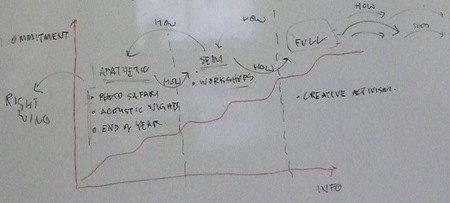
- Nur Salam – Anti Trafficking
Trafficking is just a fancy word for slavery across local or international borders. More than 2 million children are trafficked every year, half of which are trafficked in and out of South East Asia. Malaysia as a country is a start, transit and end point for trafficking; partly driven by demand from the Middle East. There are two types of trafficking. Small scale, middleman based; and large scale consortia and syndicates. The latter pose a threat not just to vulnerable individuals, but also to organisations that rescue them because they often use violent force to recapture their ‘assets’.
Trafficking of children occurs right from babies to teenagers, and involves both boys and girls. Children are typically trafficked for 5 reasons
1. Illegal Adoption (babies)
2. Used as Drug mules
3. Used as Drug Pushers
4. Organised Crime – Forced stealing/murder
5. Forced prostitution – Child Sex Tourism
Like many countries Malaysia has only recently passed anti-trafficking laws in 2008 and the problem is still poorly recognised or dealt with. Prosecution is prohibitively expensive and perpetrators often get away with no punishment. The biggest problem beyond identification and rescue, is what then happens to trafficked children who typically have no papers or identification on rescue. Depending on the age and trauma they also cannot identify real names or families. Not being identifiably Malaysian means the state typically does not recognise responsibility. The solution then is either detainment or deportation. Detainment means that a child is rescued from one prison and put straight into another. Deportation can be even worse, because they are simply left at borders and are highly vulnerable to being picked up by traffickers again.
Malaysia has few anti-trafficking organisations, and Nur Salam is a young entity, only recently set up a few years ago by founder Hartini Zainudin, but is already overwhelmed with children regularly being left on their doorsteps. They were looking after1600 children from tiny tots to teenagers when I was there a few months ago, and I’m sure its continued to face rapidly increasing demand as recognition and awareness spreads. Significant challenges therefore remain with funding and organisational structure, as well program design and delivery. The rescue and rehabilitation side is well established, but the prosecution and prevention aspect is an ongoing challenge.
We looked at systematising their model, programme design, governance, organisational structure, and scalability.
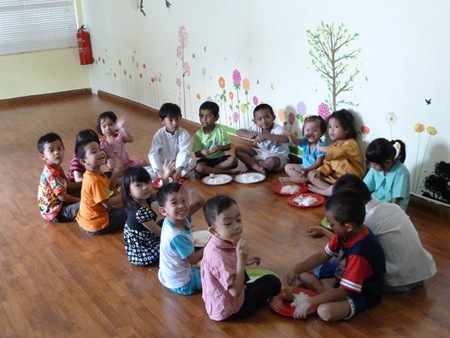
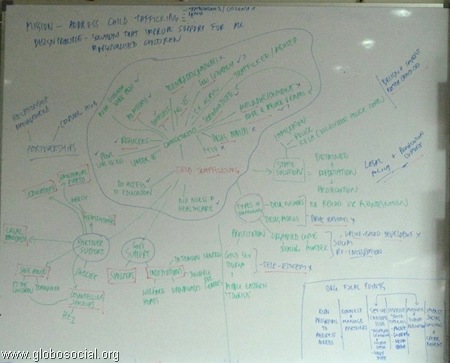

- Centre for Human Rights Studies
There is little research and data on Human Rights Violations in Malaysia, and this organisation was being set up to address that gap. We looked at mission, vision, programme design and strategic planning, with the aim of achieving clearly defined macro outcomes around Promoting and Protecting Human Rights.

- Huairou Commission – Women’s Development
The Huairou Commission is a global entity connected with Groots and UNIFEM with a primary focus on Women's Involvement and Participation in the design and development of Human Settlements. In many societies, patriarchal cultures and the marginalisation of women mean’s that urban environments often don’t cater for the needs of women thus exacerbating the problem of exclusion. For example, schools that don’t have adequate or separate toilets or sanitary disposal facilities for teenage girls, typically result in higher rates of dropout.
The UN has decided to build a portal for organisations and people involved in ensuring women’s rights and participation in urban development, and the Huairou Commission is delivering it. The challenge was that none of the decision makers on either side have much background in portal or technology design, leaving them at the mercy of Adaptive Path who are building it. We looked at realistic goals, feasibility, design, the business plan and requirements analysis. In truth the budget was prohibitive and this was not a demand led project, presenting a host of challenges. Given that the ball was already in motion and organisational inertia generally means that cutting losses is not an option, the best that could be done was to help raise awareness of and prepare for the likely challenges ahead.
- Youth Says – Social Marketing & Campaigning
Finally, I was also invited by the Youth Says Malaysia team to come in for their Friday ‘Greatitude’ Session and share tips on turning good ideas and intentions into working reality. Youth Says is doing very cool stuff with reward based social marketing through their online platform. It isn’t specifically a social enterprise, but has a dual interaction system that supports non-profits and social campaigns too. Their business model is way ahead of the global pack and I suspect is destined for big things.
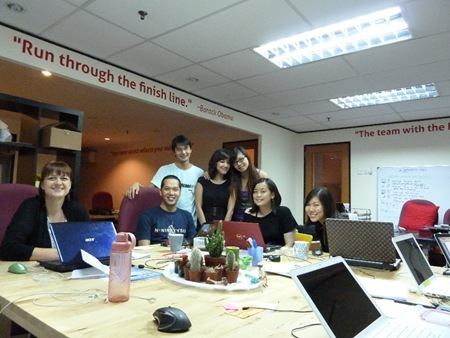
It was also a fun change to go back to a bit of creative commercial thinking and a massive brainstorming session with Khailee around connecting emotionally with audiences, threw up the formula ETP + 3C’s = $$ as a simple equation for successful and profitable online brand experiences. ETP = Emotional Trigger Point i.e. an emotive perspective your audience relates strongly to, and the 3 C’s are the 3 key things people like to do online. Connect, Comment and Contribute.
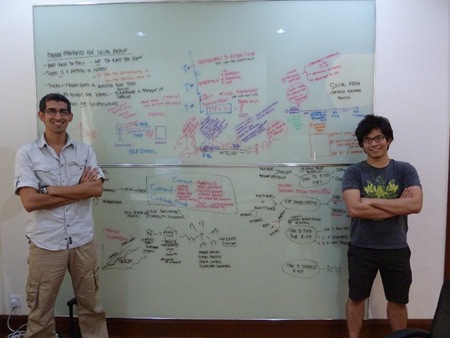
Wednesday 12 January 2011
Adventures in Malaysia
I expected Malaysia to be my first real unknown in South East Asia, and since I’d been hearing about couchsurfing all the way across South America, I decided that I’d try it out. I figured it would be a way to travel without accommodation costs, and more importantly a way to meet and get to know locals. Couchsurfing.org is a website for people who love travelling to support each other. You can find places to crash, people to hang out with, and things to do. I lucked out with somewhere to stay, just as some other friends of mine offered me an empty flat in Mont Kiara, one of the nicer parts of KL.
Kuala Lumpur was not what I expected. For some reason I just sort of assumed it would be more like a ‘true’ Asian city. Like Bangkok for example. However the reality is quite different. Kuala Lumpur is infrastructurally like Singapore but culturally more lively. The roads are superb and the condos mind-boggling. The city is huge and spread out but only has a population of 2m. In fact Malaysia as a whole has a population of only 28m.
I went around the city for a sight-seeing photo-shoot, conveniently squeezing all the sight-seeing and building watching I was going to do into one day.
KL is full of red-roofed beige condos and fantastic mosques, spread out along flyovers and huge roads with mountain ranges in the background. The Genting Highlands resort floats high in the air on dark clear nights - the cluster of lights twinkling like magic at the top of a mountain that disappears in the dark.
The ultra-famous Petronas Towers too, once the tallest in the world, now disappear in a skyline of high rises, except at night when their lights ensure they stand out like the defining monuments that they are.
It is notoriously difficult to get a decent shot of them close up as they are built on top of the KLCC mall and surrounded by other buildings.
The mall underneath is super fancy, like all others in Kuala Lumpur, reflecting the general wealth of the city and country, much of which comes from Palm Oil. There are no slums or beggars in KL, and any poverty that exists is hidden amidst the luxury or pushed out into rural towns. For the most part, KL is a city for shopping, ranging from expensive labels to cheap hawker centres.
Cinemas in KL make British ones pale in comparison, and at RM11 they only cost £2. Interestingly though salted popcorn isn’t that popular. Sweet caramel popcorn is the flavour of the day. In fact some cinemas like the one in KLCC don’t keep salty popcorn at all.
My favourite thing about Malaysia however is the way Bahasa Malayu deals with English words that are now absorbed into the language. Bus is ‘bas’, complex is ‘kompleks’ and taxi is ‘teksi’. Think how much easier English phonetics would be if all words were spelt like this!
My other favourite thing is the food. A mix of Malay and South Indian cuisines on offer. My first visit to Malaysia many years ago didn’t endear me to the food, but this time I realised what I’d missed. From nasi lemak, nasi goreng and laksa, to roti canai, satay chicken and awesome seafood. I still wake up dreaming of chicken rice!
… and in between great Asian cuisine, there’s also superb western food too. I ate one of the best cheap gourmet burgers ever at Las Vacas and developed a serious fondness for what I now think is the greatest ice-cream ever – Cotton Candy from Baskin Robbins. Tastes like candy floss and bubblegum!
The greatest win though was being introduced to Big Apple Donuts. Now I’m not really much of a donut fan, but these are “Sushi” donuts. They’re shaped like sushi, with toppings to make them look like sushi. Sweet and light and delicious. The greatest ever. Somebody needs to start a franchise in London!!
The cheapest places to eat are Mamak restaurants. Muslim Indians are called Mamaks in Malaysia, and they’re typically from South India. Food is great and ridiculously cheap. You’d be unlucky if your meal cost you more than a pound. Proper restaurants on the other other hand are a lot more expensive but still good. The local chains are Pappa Rich and Old Town White Coffee, and other favourites are Nirvana, Alexis and Delicious.
Nightlife in KL is cool, and ranges from pubs, to bars and restaurants. For the most part fun times and socialising involved food, as you can tell from the above pictures, but it was great to make new friends and catch up with old ones like my university classmate Azuan.
Finally I can’t move on without a mention of the greatest live band ever. Retro 9. Three Indian guys playing classic tunes in a great bar called Cavells, and sounding exactly like or better than the originals. Everything from The Doors to The Eagles. They’ve disbanded now. Gutted.
Going in and out of KL over the past four months meant that I was present for lots of cultural events. From Ramadhan and the amazing evening markets, to the Hungry Ghost Festival and Lion Dances, which I thought only happened in old Jackie Chan films!
Just before I left Malaysia, Angelina took me to see Fireflies at the Firefly Park in Kuala Selangor. It is a protected area kept specially for vast populations of fireflies. The park opens at dusk and at 8pm small boats take you down the river in complete darkness with millions of fireflies like Christmas lights twinkling in unison on along the river banks.
And so the journey to live and learn continues!

